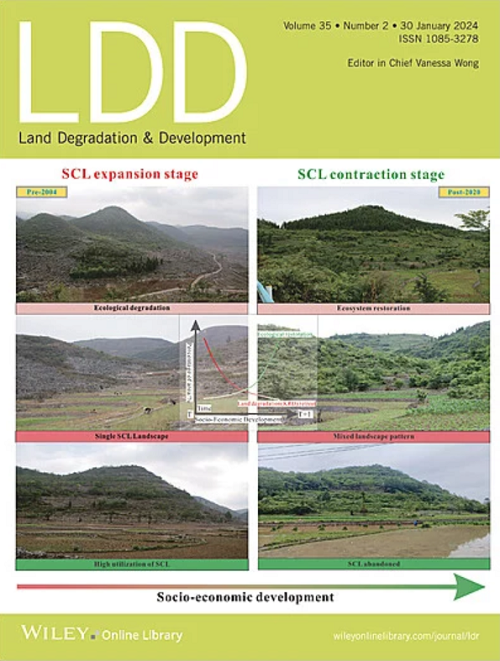Effects of Log Erosion Barriers on Soil Fungal Communities Ten Years After a Severe Wildfire in a Semi-Arid Forest
IF 3.6
2区 农林科学
Q2 ENVIRONMENTAL SCIENCES
引用次数: 0
Abstract
Fungi are involved in several biotic processes in soil. Many studies have investigated the impacts of wildfire on fungal communities, but few have explored their diversity after post-fire management. This study seeks to fill this gap by evaluating the species richness, diversity, and evenness of fungi, and many soil properties in a severely burned forest in Central-Eastern Spain 10 years after installing log erosion barriers (LEBs) as a post-fire management treatment. When compared to the unburned soils, all diversity indices of fungal communities—especially species richness and abundance, +39%,—significantly increased in burned and untreated sites. This was mainly due to the long time elapsed from wildfire and post-fire treatment and the high cover of dead wood, which supported soil humidity for fungi development. Compared to burned areas, LEBs further increased fungal biodiversity, +43% in species richness, and +22% in abundance. This increased biodiversity was supported by a higher content of organic matter, nutrients, and some enzymes. Therefore, LEBs used in post-fire management can be suitable for the increased development of some fungi species and their diversity in semi-arid forests affected by severe wildfires.半干旱森林严重野火10年后木材侵蚀屏障对土壤真菌群落的影响
真菌参与了土壤中的几种生物过程。许多研究调查了野火对真菌群落的影响,但很少有研究探索火灾后管理后真菌群落的多样性。本研究试图通过评估西班牙中东部严重烧毁森林的物种丰富度、多样性、真菌均匀性和许多土壤特性来填补这一空白,该森林在火灾后安装了原木侵蚀屏障(LEBs)作为管理处理10年后。与未烧地相比,烧地和未烧地真菌群落多样性指数均显著增加,尤其是物种丰富度和丰度(+39%)。这主要是由于野火和火灾后处理的时间较长,以及枯木的高覆盖,这支持了真菌生长的土壤湿度。与火烧区相比,火烧区真菌多样性进一步增加,物种丰富度增加43%,丰度增加22%。这种生物多样性的增加是由有机物、营养物质和一些酶的含量增加所支持的。因此,在严重山火影响的半干旱森林中,利用LEBs进行火后管理可以促进某些真菌物种的发育及其多样性。
本文章由计算机程序翻译,如有差异,请以英文原文为准。
求助全文
约1分钟内获得全文
求助全文
来源期刊

Land Degradation & Development
农林科学-环境科学
CiteScore
7.70
自引率
8.50%
发文量
379
审稿时长
5.5 months
期刊介绍:
Land Degradation & Development is an international journal which seeks to promote rational study of the recognition, monitoring, control and rehabilitation of degradation in terrestrial environments. The journal focuses on:
- what land degradation is;
- what causes land degradation;
- the impacts of land degradation
- the scale of land degradation;
- the history, current status or future trends of land degradation;
- avoidance, mitigation and control of land degradation;
- remedial actions to rehabilitate or restore degraded land;
- sustainable land management.
 求助内容:
求助内容: 应助结果提醒方式:
应助结果提醒方式:


